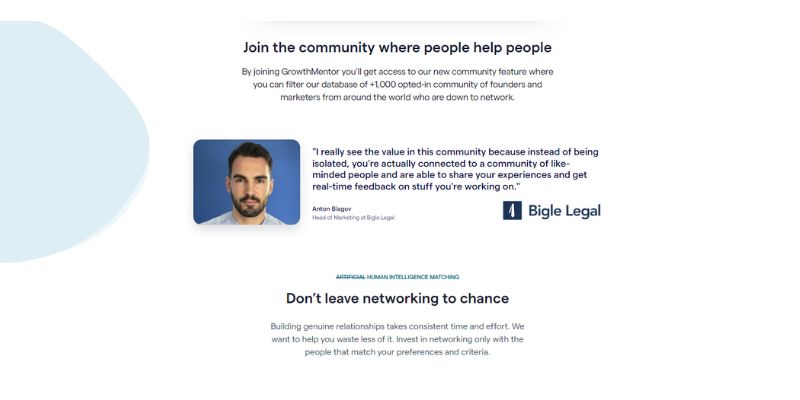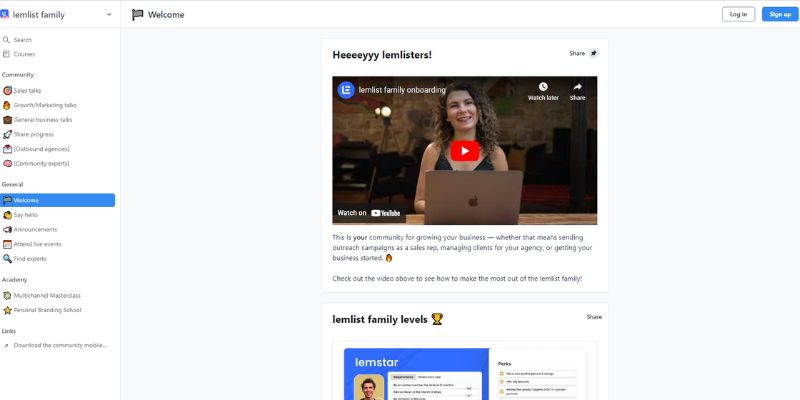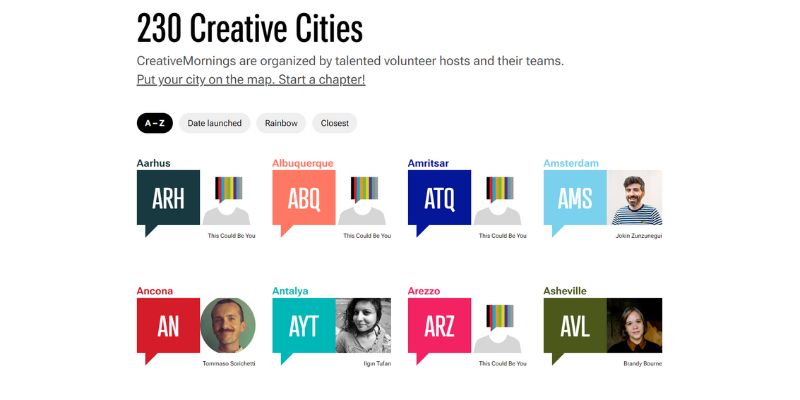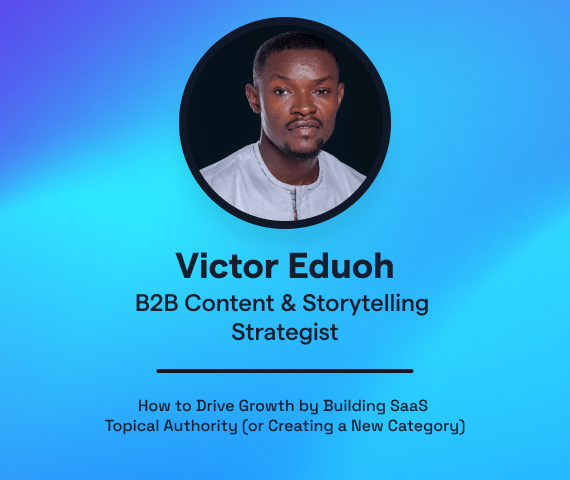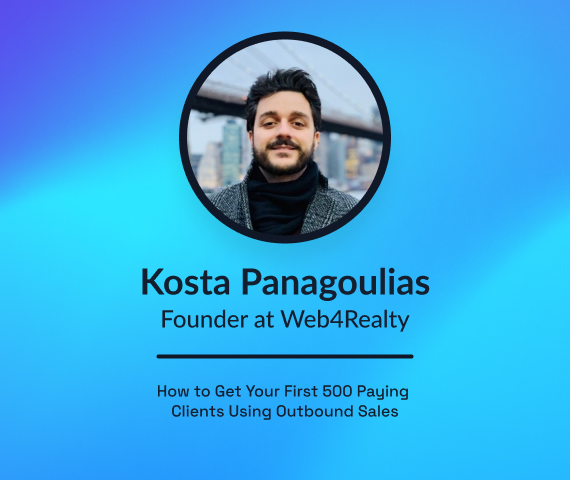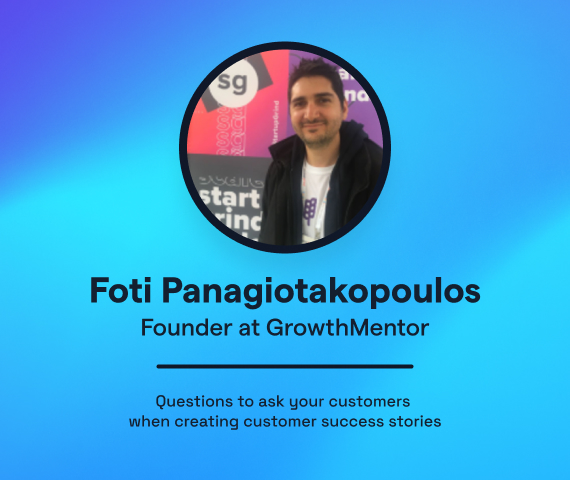A Step-by-Step Approach to Community Building for Your Brand
I’m a huge believer in brand communities. I’ve been building and running communities for a long time, and I have been a member of communities for even longer. It hasn’t always been the case, but communities are finally being thought of as a business asset and not just as a social thing for like-minded people to come together.
Why build a brand community
I’ve seen this happening first-hand. I’ve spent the last four years in Singapore, where I started Growth Marketing Studio to help early-stage B2B startups to define and execute their growth marketing strategies. During that time, I’ve built several brand communities, anywhere from a dozen people to around 5,000.
There are several reasons why building a community can be a good idea:
It’s fun: It’s all about the people, and so if you like to socialize and make new personal connections then you’re going to love it.
It’s a business asset: Once community members engage, people will stick around and keep buying from you.
It’s cheap: The basic tools for community building are free. It doesn’t cost a thing to create a WhatsApp group and add a few people to it.
It’s scalable: Digital ad campaigns are the only things I can think of that are easier to scale than a community.
It makes hiring easier: For example, if you’ve got an early-stage startup and you want to hire someone to do performance marketing, it’s a lot easier to find the right person if they’re already a member of your community.
It’s easy to hire for: As well as making hiring easier, it’s also easy to hire someone to run your community. You just need to find someone with the right mindset, because you can train them on the job.
It helps you to stay connected: Communities are a great way for your brand to stay connected with your users, no matter what your product or service is. You can get to understand the problems they have and then make sure that you’re building solutions to them.
You can tap into their expertise: When you have access to a group, you can tap into their expertise, ask questions, and experiment.
In a nutshell, when you’re an early-stage startup, a community is a great way to take the pulse of your users and see if you have Product-Market Fit.
Great brand community examples
GrowthMentor
The chances are that if you’re reading this article, you’re already familiar with GrowthMentor. As well as providing mentors that genuinely enjoy helping people to grow their businesses, GrowthMentor also hosts a community of like-minded people who come together to support one another. It’s particularly well suited to networking and discussions around the future of the many different industries that the mentors belong to.
Find out more about GrowthMentor
Lemlist
Lemlist’s community is dedicated to helping people to perfect their email marketing, and as well as bringing like-minded people together to share tips, tricks, and best practices, it also comes with a number of masterclasses and external links to where people can learn more. They even highlight a Lemlister of the Week to give back to their community and to highlight those who are most helpful towards other people.
Creative Mornings
Creative Mornings is a free series of breakfast lectures that takes place every month for local creatives in cities all over the world. They have a reasonably active online community on Instagram, Facebook, and Twitter, but they’re particularly interesting for the way that they’ve managed to build in-person communities in each of their target cities. Better yet, if they’re not active in your local city, you’re welcome to start a chapter of your own!
How to start a brand community
Before you start to build your community, you need to know what its purpose is going to be. For example, is it a place for chess lovers to talk about the game or for product managers to share tips and tricks for their companies? You’ve got to have something in mind before you start building.
Once you’ve decided upon what your own community-building brand will be about, you’re ready to get started. The single biggest pitfall that people fall into is that they have a tendency to think that because communities are all about people, there’s no need to plan.
That’s true in some ways, and false in others. You still need to be clear and upfront about how the community fits into your business and what success will look like. You need to make decisions like whether you’d prefer 50,000 moderately active members or 500 people that are dedicated to it.
You’ll also want to think about whether it’s a global or regional community, and whether people need to pay to become members or whether it’s free to join. Will it be invite-only or can people join at will? Is it top-down or bottom-up?
There are no right or wrong answers here, as long as you’re clear on what you want to achieve. Communities take time and it’s only natural for you to have moments of doubt. When that happens, it’s easy to say, “We tried, we invested and we didn’t get a reaction.” Before you know it, you start changing things and the project becomes a disaster. That’s why it’s so important for you to make these choices and then stick with them.
Community types
Communities come in a variety of shapes and sizes, each with its unique dynamics and potential challenges. Understanding the different types of communities can help you design and manage yours effectively. Let’s delve into some of the primary categories:
Size: Small vs. Medium vs. Large
The size of a community affects its dynamics, with smaller communities offering intimacy, medium ones balancing diversity and camaraderie, and larger ones providing diverse perspectives but facing challenges in moderation.
Geographic Scope: Regional vs. Global
Regional communities share local experiences and interests, whereas global brand communities present diversity but may struggle to foster unity due to cultural and linguistic differences.
Access Model: Free vs. Paid
Free communities are democratic and inclusive but can struggle with maintaining quality. Paid communities attract dedicated members for better interaction but can limit diversity and growth due to fees.
Membership Model: Open vs. Invite-only
Open communities encourage growth and diversity but can find it hard to manage new members. Invite-only communities ensure quality but can be seen as less inclusive.
Leadership Style: Top-down vs. Bottom-up
Top-down communities maintain order efficiently but can struggle with member engagement. Bottom-up communities foster a strong sense of ownership and engagement but face challenges in decision-making and maintaining focus.
Steps to get started
- Define your goal and what success looks like: This is what will help you to determine whether you’re progressing in the right direction. It can help to set SMART goals – that is, goals that are specific, measurable, achievable, realistic, and timely.
- Community values: These are the commonalities between the different members that help to tie them together. Identifying the values that members need to have is what’s going to make them stick. Examples of community values include being health conscious, striving for social equality, or wanting to be the best growth marketers on the planet.
- Start small: It’s always better to start small than to aim too high and fail spectacularly. That way, you can learn from your mistakes without totally derailing your community. For example, I started a community on Slack and learned that it wasn’t the right tool for the target audience, but because I started small, it was easy for me to switch to another platform.
- You’re the center: When you get started, you’re always at the center of the community. A lot of people react negatively to that because they argue that they’re starting it for other people and it’s not about them. That’s true, but there needs to be a reason for people to join the community, and that will usually be you in the beginning. People will be looking to you for leadership and social cues for what is and isn’t acceptable in the community.
- Chat and support: It’s counterintuitive, but when you start, you want to do things that don’t scale. Chat with people one on one and get to know them to create a bond and a more emotional connection. Provide all of the support you can and be relentlessly helpful.
Introducing GrowthMentor Community Networking
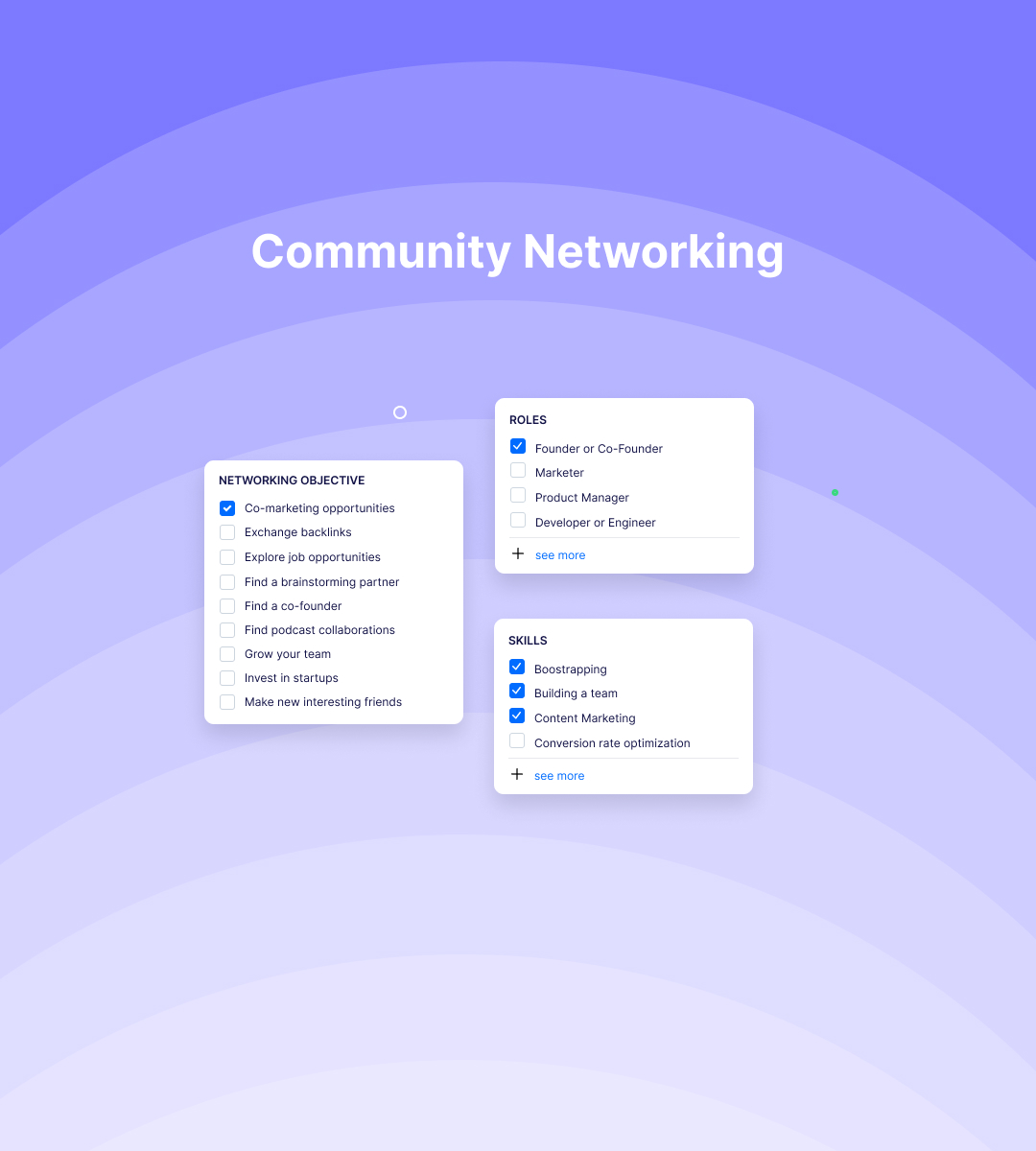
How to run a successful brand community
Running a community isn’t rocket science. You can get started by setting up a simple WhatsApp group and talking to people. Think about all of the different ways you can help people and go out of your way to do so.
Once your community starts to become successful, people will talk to each other and maintain conversations even when you’re not around. That’s the beauty of having a community, but it will only happen if you set clear values that people need to possess if they want to be a part of it.
People gravitate towards people like themselves, and so you need to ask yourself, “What do people like us look like?” You also need to start where your users are. If you start with the wrong tool/platform, it’s not going to work. Luckily, I find that the vast majority of communities can start with WhatsApp.
The chief magic officer
I like to talk about a concept I call the chief magic officer. One of the reasons why I love communities so much is that magic can happen, and when it does, I literally get goosebumps. I’m talking about when you realize that the people in your community aren’t just members – they’re your people.
And because they’re your people, you need to get to know them and care for them. You need to address their needs and connect them, and that’s where your chief magic officer comes in. You can call them whatever you want – community manager, head of the community, or whatever else takes your fancy.
Whatever you call them, there needs to be someone in charge, someone who wakes up in the morning and goes straight to the community to check in on them and to moderate it as needed. It’s a full-time job, and while it might not be a senior role, it does deserve plenty of time and attention.
When your chief magic officer talks to people, they need to constantly probe them, finding out what they need and whether they have any specific problems. Luckily, this comes naturally if they just talk to people with no expectations.
Another important role of the chief magic officer is for them to connect people. I do this several times a week, bringing together people who don’t know each other but who can help each other. When you do that, it comes out of the blue and will surprise and delight people – especially because they’ll know that you have zero self-interest in doing it.
If they’re comfortable doing so, it’s a good idea for your chief magic officer to get personal and share what’s going on in their life. That can help other people to connect emotionally with them and will establish that all-important trust. Just don’t force it if it’s something that you’re not comfortable with.
Finally, some people are natural-born chief magic officers. It’s a lot easier for some people than for others, and so it falls to you to find those people and bring them to the forefront of your community. Michelle Evans at GrowthMentor is a great example of a natural-born chief magic officer.
Surround yourself with 2000+ people who have been in your shoes.

How to manage your community
The challenge with hiring a community is that s*#t happens. It doesn’t necessarily have to be something crazy, but unexpected things inevitably happen and then you have to do something. That’s why you need to make sure that you’re prepared in advance. Hope for the best and plan for the worst.
Here’s how to do that:
- Establish rules: Having and communicating rules is super important. There are obvious rules, like not permitting harassment and discrimination, but you also need to think outside the box and ask yourself what acceptable behavior does and doesn’t look like. Make sure that everyone knows about those rules and that you occasionally repeat them.
- Have a manifesto: I find that one of the best ways to make sure that everyone knows the rules is to have a manifesto. It can come in any form you like, from a written document to a video, and should be both inspirational and specific about the grand vision for the community.
- Be a role model: If you want your community members to follow your rules, you need to live by them yourself. You can think of yourself as the sheriff in a small town. It’s your town and you’re there to enforce the rules, but you’re also there to set a good example for everyone else.
- Challenge behavior: At some point, it’s inevitable that someone will cross the line, and you need to deal with it and ensure that the rules are enforced. Knowing about the rules is no good unless people know that there will be consequences if they break them.
- Remember that quality trumps quantity: When you’re scaling your community, don’t sacrifice quality for the sake of quantity. It’s better to have a small, engaged community than a huge, sprawling community that’s like the wild west.
- Be transparent and vulnerable: We’ve already talked about this a little bit, but this also comes into play when you’re laying down the law. If you discipline someone, explain what you did and why you did it. And don’t be afraid to acknowledge that you’re only human and that you don’t always get things right the first time.
Community experiences and rituals
When we talk about experiences and rituals, we’re talking about proposing activities for the community to take part in. This is an important function of the chief magic officer.
Now, you’re not just doing this for fun, and there needs to be some structure. You could group people by the type of interactivity they like with their community. For example, if you organize a Zoom call with a panel, some people will attend live while others will prefer to watch a replay.
Then there are the people who prefer to consume written content over video content. In that case, you could have a Q&A in your WhatsApp group in which the chief magic officer acts as moderator and the panelists answer questions.
When you try out these different approaches, different people will react to them in different ways, and it falls to you to make sure that you’re paying attention to those reactions and making sure that you’re picking out your experiences and rituals based on what people are looking for.
I keep a big spreadsheet for all of my communities where I maintain a list of all of the crazy ideas that I have for what we could do within the community. For example, I’ve launched morning walks in Singapore so that people can join me to walk and talk about whatever they want to.
Introducing GrowthMentor Community Networking

How to engage with your community
When it comes to community engagement, you’re going to want to think about the following:
- Messaging: What messaging are you going to use to attract new members and retain existing ones? Of course, this should align with your band guidelines and identity.
- Tools: The tools that you use are important, but they’re never what you should start with. Choosing the right tools comes later once you’ve established your community and it’s starting to grow. That way, you’ll have a better idea of the kind of tools that you’ll need.
- Moderate: How are you going to moderate discussions and make sure that everyone’s following the rules?
- Connect them: When you have a large community with a lot of people, it can be hard for people to understand what’s going on. It falls to you to create rituals that can bring people together and connect like-minded people who can help one another.
- Enable them to get connected: This builds on the previous point and the idea that as the community grows, there’s a network effect by definition. On top of that, newcomers are likely to have questions and you can often provide them with the answers they need by putting people in touch with each other. That way, you don’t have to provide the answer every time and it becomes much easier for you to scale.
- KPIs: KPIs are key performance indicators, the metrics that you’ll use to determine whether your community is performing as you hoped it would. You can look at metrics like the number of messages per user, the number of questions answered, etc.
The role of high quality content in communities
They say that content is king, and that’s definitely true when it comes to building communities. Every post and every comment is a piece of content, and the content itself is like the gasoline that fuels the engine of your brand and community.
Here’s what you need to know about using content within your community:
- Map people’s interests: The more people you have and the more they interact, the more collected knowledge you’ll have. Mapping people’s interests allow you to better organize this knowledge and make it categorized and searchable.
- Content hub: Content hubs are designed to allow you to store the content that you’re creating and to make it easier for people to find. Just remember that you’ll want different tools for different needs, so Slack might work well for instant messaging while you might want a blog site or a knowledge base for housing articles.
- Give credit: It should go without saying that you need to give credit where credit is due and acknowledge the members who are creating and contributing content to your community. Not only can this help you to avoid legal liability, but also it can help to reward them and to instill a greater sense of belonging in your community.
- Co-creation: Co-creation takes a little time, but it can also be a great way to spark discussions. For example, in some of my communities, I can see people debating different topics. When that happens, I usually try to take a group of people and hop on a call with them so that we can make an article that covers each side of the debate.
- Remove yourself: I know it sounds weird, but when you start a community, the goal should always be to remove yourself. This happens when you’re able to identify your ambassadors – the people who are the most active in your community – and empower them to take over from you and become the de-facto public faces of your community.
Surround yourself with 2000+ people who have been in your shoes.

How to scale your community
If you hope to scale your brand community, you need to make sure that you have structure. There are a number of different ways to think about this, but it can help to use the 90-9-1 rule. This states that 90% of community members will be observers who are just there to listen, 9% of them are contributors who ask and answer questions and participate in discussions, and then 1% of them are power users, who are the most active and the first to help out the newbies.
It should go without saying that different types of community members require different types of content. I like to categorize community interactions into one of two categories:
- Messaging: Live communication, either one-to-one or many-to-many. This is typically unstructured but a lot of fun.
- Knowledge: There’s a lot of knowledge in the conversations that people have because people ask questions and get answers.
Ideally, you’ll create different spaces for each of these two aspects to cater to these two very different types of users. You also need to make sure that the knowledge archive is easy to browse so that people can discover solutions there. Otherwise, if you scale too early and without sufficient structure, you’ll lose all of that knowledge because it will become too difficult to find.
To achieve all of this, I like to think of communities as being like products. This means asking things like what features you want to add to your community, how you plan to launch it and what iteration looks like. You can even carry out A/B testing.
Finally, you’ll want to build a team of ambassadors that are made up of the power users and the contributors. You’ll need to have an ambassador program in place for them to join that’s articulated clearly and has incentives for people to join it. In some communities, the status that they receive is enough, while others require something more tangible to convince people to take part. I’d also caution against providing financial incentives because I’ve seen that go wrong too many times.
You also need to make sure that they understand what their role is as an ambassador, as well as the metrics that they’re going to be judged on. Typically, the role of ambassadors comes down to recruiting people, helping to organize the community, answering questions, and providing moderation.
Your community members also need to be able to go through some sort of transformation. I like to think of it as being like how Pokémon evolve. For example, if someone’s part of the 90%, they might not feel confident enough to ask or answer questions, to begin with, but as time goes on, they’ll undergo a transformation, and eventually they’ll be ready to start participating.
Ultimately, your goal is to set up member journeys in such a way that it will encourage members of the community to bloom and flourish. You can do this by creating experiences and turning the most popular ones into rituals. When people participate in these rituals, they’ll feel as though they belong to something bigger than themselves.
Conclusions
Community building can be a lot of work, but when you get it right, it’s magical. When that happens, the community is no longer yours, because it belongs instead to the members.
To recap, here are the six steps you’ll want to follow to build a killer community:
- Start small
- Talk to everyone
- Grow slow
- Identify ambassadors
- Get them involved
- Let the magic happen
Want to learn more about community building? Watch my workshop on how to build a brand community from scratch, or let’s connect via a 1:1 call – love to meet you!

